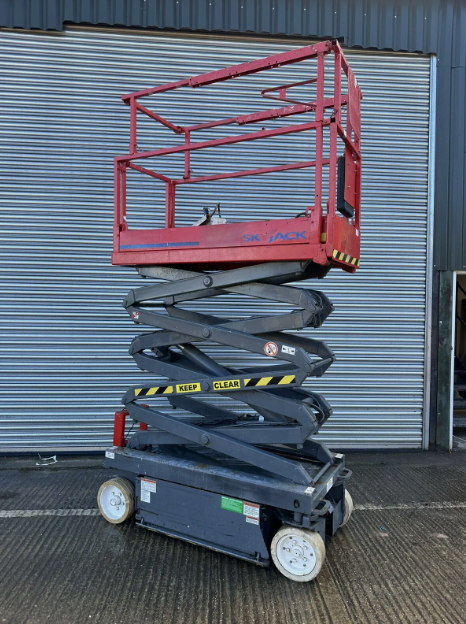Scissor lifts are essential equipment in many industries, providing efficient access for work at heights. Ensuring their safety and functionality is crucial for both operational efficiency and compliance with safety regulations. Regular inspections play a pivotal role in maintaining the safety and longevity of scissor lifts. Additionally, these inspections can help identify potential issues early, preventing costly repairs and downtime. In the post we will look in more detail into why inspections are necessary, what they involve, and how often they should be conducted.
Importance of Inspections
Safety is paramount when it comes to scissor lifts. These machines are used for a variety of tasks, from routine maintenance to construction projects, and it is crucial that they function properly to prevent accidents and ensure smooth operation. Regular inspections help identify potential issues before they escalate into costly repairs or, worse, accidents.
Inspecting scissor lifts is not only about compliance with regulations but also about protecting the wellbeing of workers who rely on these machines daily. A well maintained scissor lift is less likely to malfunction unexpectedly, reducing downtime and improving productivity.
What is Involved in an Inspection?
Inspections of scissor lifts typically cover several key areas.
- Structural integrity. Checking for any signs of damage or wear in the scissor mechanism, platform, guardrails, and other structural components.
- Mechanical components. Assessing hydraulic systems, brakes, steering, and other mechanical parts for proper operation and potential leaks or malfunctions.
- Electrical systems. Verifying that controls, switches, and emergency systems function correctly and safely.
- Safety features. Testing emergency stop buttons, overload sensors, and tilt sensors to ensure they operate as intended.
- Operational checks. Conducting a functional test to ensure the lift moves smoothly and responds correctly to commands.
These inspections may be visual, operational, or comprehensive, depending on the frequency and depth required by regulations and the lift manufacturer’s recommendations.
Frequency of Inspections
The frequency of scissor lift inspections is primarily determined by regulatory requirements and manufacturer guidelines. Below is a general guideline:
- Before each use, operators should perform a pre use check to ensure the lift is safe to operate. This includes checking controls, safety features, and visual inspection for any obvious signs of damage or malfunction.
- Beyond pre use checks, scissor lifts typically require more thorough inspections at regular intervals. Common intervals include monthly inspections, many regulations require scissor lifts to undergo a detailed inspection at least once a month. This ensures that any wear or issues are identified early.
- A comprehensive inspection by a qualified inspector is often required annually. This involves a thorough examination of all components and systems, often including load testing and verification of structural integrity.
- After significant events such as accidents, storms, or extended periods of non use, scissor lifts should undergo a thorough inspection to ensure they haven’t sustained damage that could affect their safety or performance.
Compliance and Best Practices
Adhering to regulatory requirements is essential for workplace safety and compliance. In the UK, scissor lifts fall under the Provision and Use of Work Equipment Regulations and must be inspected regularly by a competent person. Following manufacturer recommendations for maintenance and inspections is equally important. Manufacturers provide guidelines specific to their equipment that ensure optimal performance and safety.
Be Confident in rhe Safety and Efficiency of Your Scissor Lift
Regular inspections are not just a legal requirement; they are fundamental to maintaining the safety and efficiency of scissor lifts. By conducting inspections at appropriate intervals; whether daily, monthly, or annually, businesses can ensure that their scissor lifts are in top condition, minimising risks and maximising productivity.
Incorporating a robust inspection schedule into your workplace safety protocols not only protects your employees but also extends the lifespan of your equipment. Remember, safety should always be the top priority when operating scissor lifts or any other machinery in the workplace.
Should you have any further questions regarding the safety and efficiency of your scissor lifts as well as their inspections and maintenance, or if you want to make sure you are fully up to date with all your responsibilities when you own a scissor lift before making the investment, our experts at Elite Access Repairs are on hand to provide you with everything you need to know. We also provide you with any necessary scissor lift repairs you may need in the future. Simply visit our website or get in touch with us by phone on 01908 756 056, by email at info@eliteaccessrepairs.co.uk or via our online contact form and we’ll get back to you in no time.


